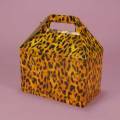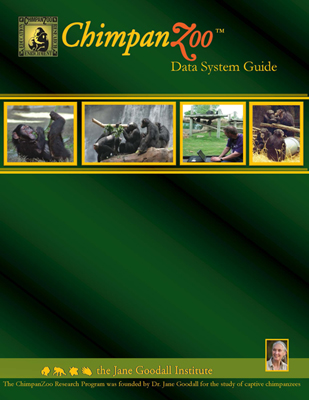|
Shanghai
Wild Animal Park, China Report
April
22-28, 2016
Goal
The
purpose of the visit was to integrate four infants and a
female solitary chimpanzee and a pair of chimpanzees into a
group and to give recommendations regarding basic husbandry
routine and enrichment for all species.
|
number
|
Name
|
Gender
|
Age
|
Remark
|
|
1
|
Zhenzhen
|
female♀
|
15years
old adult
|
in
group
|
|
2
|
Xiaoxiao
|
male♂
|
11
years old adolescent
|
|
3
|
Lili
|
female♀
|
11
years old adolescent
|
alone
|
|
4
|
Rapo
|
male
♂
|
5
years old infant
|
in
group
|
|
5
|
Baobei
|
female♀
|
5
years old infant
|
|
6
|
Ado
|
female♀
|
5
years old infant
|
|
7
|
Dola
|
female♀
|
4
years old infant
|
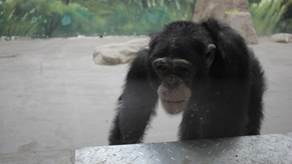
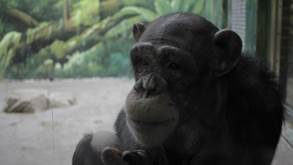
Xiaoxiao
Zhenzhen
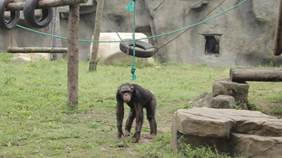
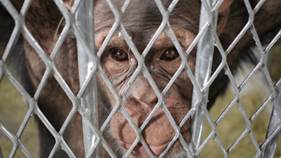
Lili
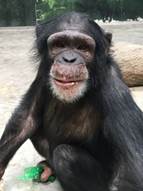
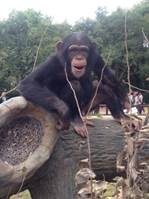
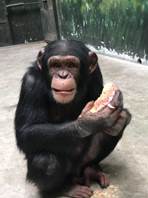
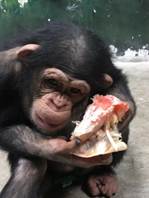
Rapo
Baobei
Ado
Dola
Introduction
There were seven chimpanzees
kept in 3 different enclosures Shanghai Wildlife Park (SWP).
Lili was kept in
solitary confinement for approximately nine years due to
previous aggression between her and Zhenzhen. While the four
infants were kept together, they were housed separately from
the adults because of the belief that the male would kill
them if introduced.
The introduction
was accomplished in four days. First, Lili was introduced to
the four infants. It is not well known, but formerly-bonded
infants can and will protect each other if needed (even
against adults). As expected, the infants stood up for
themselves during Lili’s mild attacks, but soon the group
settled down and began socializing (playing, tickling,
grooming, etc.). This group of five chimpanzees was housed
together for an extra day to allow Lili the opportunity to
feel more comfortable and gain more allies before moving to
the adults. During this period, Xiaoxiao and Zhenzhen were
let inside the tunnel system – a design allowing the
shifting of animals from all directions to any enclosure. In
this tunnel system, the pair could observe the five
chimpanzees together. The group was separated overnight or
when being fed.
By the morning of
the third day, the Lili/infant group appeared to be relaxed
and comfortable together; the chimpanzees did not fight when
let together after separation, were playing together,
grooming each other and/or resting comfortably with each
other. At this time, the adult male, Xiaoxiao, was
introduced. As is typical for males, Xiaoxiao displayed for
a couple of minutes, running around, kicking and banging on
doors and mesh before settling down. His aggressive display
made the rest of the group nervous (running around and
screaming) and the other chimpanzees, again, stood up for
each other and even chased Xiaoxiao to a corner where he
cried and solicited for reassurance with an extended hand.
At no point did Xiaoxiao threaten aggression, despite the
fact that he could have easily killed and/or seriously
injured any or all of the infants at any time; he chose to
exhibit the submissive behaviors described above. Although
we cannot completely understand the motivations for his
behavior, one can speculate that he was most interested in
keeping the peace, knowing that he was responsible for
frightening the group. This incident provides another
example that male chimpanzees – at least in captivity –
are most often gentle giants and have no interest in
exercising their strength on weaker members. On the fourth
day, the second female was integrated into the group without
any incidents.
Shanghai Wildlife Park continues to report the group is
doing well together.
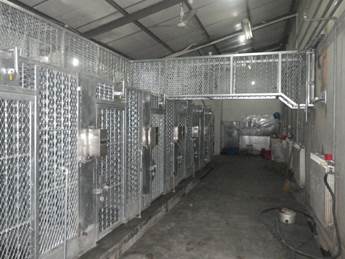
Substrate
and furniture
SWP
has beautiful, large exhibits, full of tall furniture,
climbing structures and natural surface with grass. The
inside cages need a little bit of improvement with furniture
and substrate through.
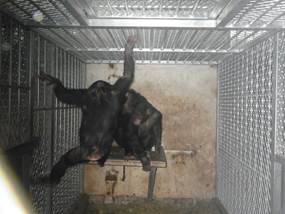
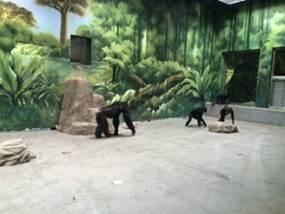
Animals
received hay as substrate prior the introductions with
chopped food hidden both in their indoor exhibits and night
houses.
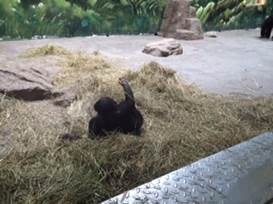
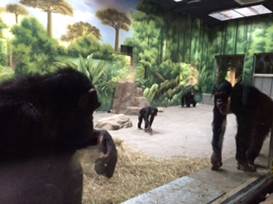
Suggestions: Metal furniture needs to be changed into wooden surfaces if
possible.
Begin keeping animals off of unyielding surfaces (brick,
concrete, etc.). The use of appropriate substrate (inside
– paper products, hay or straw, etc.; outside –
nonflammable materials such as grass, sand, soil, mulch,
fresh browse, etc.) will make a significant difference not
only in the animals’ mental and physical health, but also
in the improvement of the exhibit aesthetics. Using
substrate will reduce cleaning time and water consumption,
as well. Soaking, scrubbing and hosing dry waste takes much
longer than spot cleaning substrate due to the substrate’s
ability to absorb urine and cover fecal matter. Reducing
hosing and partially covering surface with substrate will
overcome any of these obstacles and provide animals with a
soft surface. In China, paper products are toxic, but
pet-safe; eco-friendly products (bags, wrapping papers,
boxes, burlap bags, etc.) are available online. Please
review samples:
http://www.beyondplay.com/ITEMS/H781.HTM
http://www.greenpartygoods.com/treat-boxes-and-bags-goodie-boxes-and-bags-c-2_21.html
http://www.poshpuppyboutique.com/Holiday_Wrapping_Paper_Soy_Based_Non_Toxic_No_p/wp-ppp-bir00200-i.htm
http://www.spoonflower.com/gift_wrap


Pet
Friendly - designed specifically for pets with soy-based,
non-toxic inks
•
Environmentally responsible - Forest Stewardship Council (FSC)
certified product
•
Made in the USA - a safer product, held to a higher standard
•
Engages pets in the celebration!
•
Box Size: 12x9x2 in.
Package
Size: 11.5x9 in.
Sheet
Size: 39x26 in. (7sq. ft.)
Winter
care
The
chimpanzees are usually locked inside for 3-4 months during
wintertime.
Chimpanzees
can be allowed outside for limited time during the winter.
However, they need to have access to inside heat and
provided with extra blankets. Some institutions keep a
temperature guideline and will only let their chimpanzees
out if the temperature reaches 10-13 degrees Celsius.
Others, such as Chimpanzee Sanctuary Northwest, USA, allow
the chimpanzees to make their own decision. It is important
to remember to provide chimpanzees the opportunity to seek
warmth if allowed outdoor access during cold weather, and
there might be a temperature below which outdoor access is
inappropriate.
The only time they don't allow them outside is when
heavy, wet snow reduces the voltage on their electric fence.
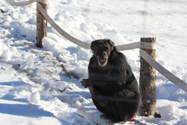
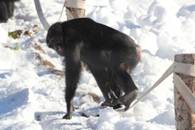

Chimps
in Snow
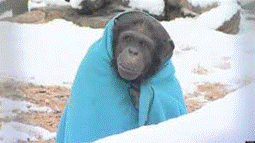
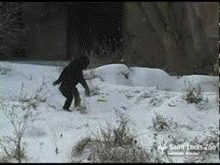
Wales Ape and Monkey Sanctuary, U.K.
Saint Louis Zoo, USA
https://www.youtube.com/watch?v=1WkgE8SuL3A
See-through
curtains made from heavy-duty plastic strips can be hung
inside the night houses to keep the animals warm. Management
must take into consideration the type of enclosure, the
animals’ behavior and characteristics, the materials used,
if it would prevent the animals from exiting or entering the
enclosure, etc.
Suggestions:
The method used by the Chester Zoo in England is simple. Strips
of thick, clear ARCO PVC are cut to the length of the slide
and holes are drilled in the PVC. A strong, thick metal
plate, which has the same amount of holes drilled in it, is
lined up and bolted onto the wall. This makes it a lot
easier to take off and replace broken or torn PVC strips.
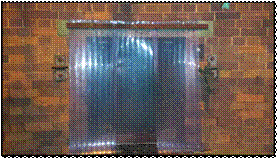
General Propositions
The park was divided into two
sections, a drive through and a walking area. In the drive
through part, the animals were kept in extremely large,
luxurious exhibits with animals and appeared in good mental
and physical health. Due to lack of time, I didn’t have a
chance to look at inside holding areas.
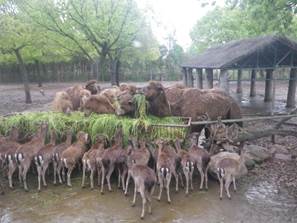
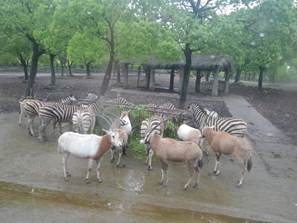
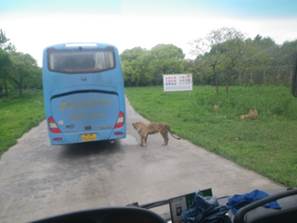
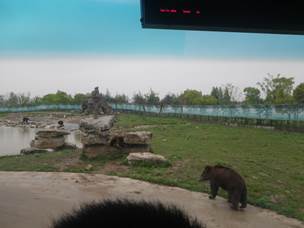
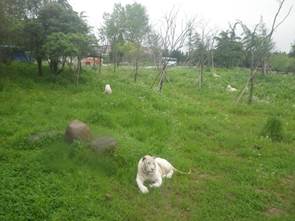
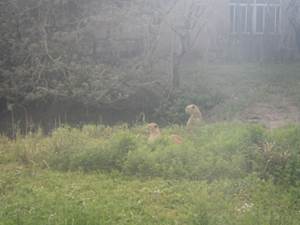
In
the visitor walk section; although areas were smaller, most
of the times, animals were kept in large, adequate exhibits.
Most
animals had enrichment. It seemed like SWP was genuinely
caring about their animals’ exhibition and wellbeing.
However, in general, all animals lacked substrate or had
inadequate substrate in the inside areas (night houses,
holding pans, etc.) and in some cases the exhibits as well.
Meerkat exhibit had larger rocks and Fennec foxes had hard
floor instead of deep sand.
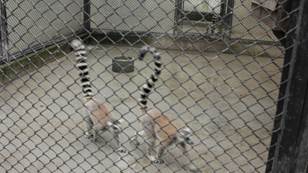
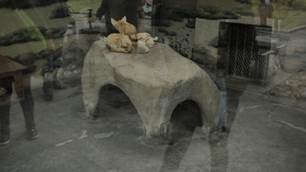
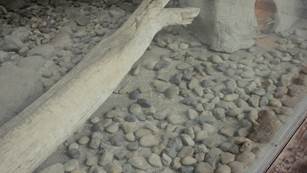
Suggestions:
Special attention needs to be made for small carnivores such
as fennec foxes and meerkats. These animals dig deep holes
and tunnel systems underground in soil and sand. Fish tanks
need to be furnished with rockwork, sand and plants.
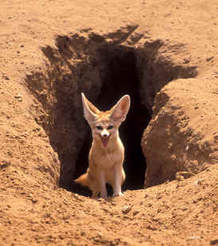
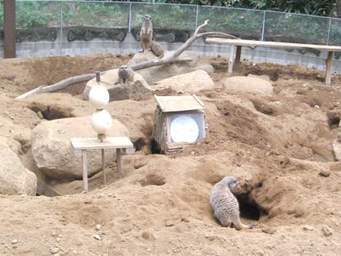
Large
felines and primates had excellent enrichment programs. I
especially applauded the tiger climbing posts and the
capuchin monkeys breaking nuts with rocks.
Orangutans
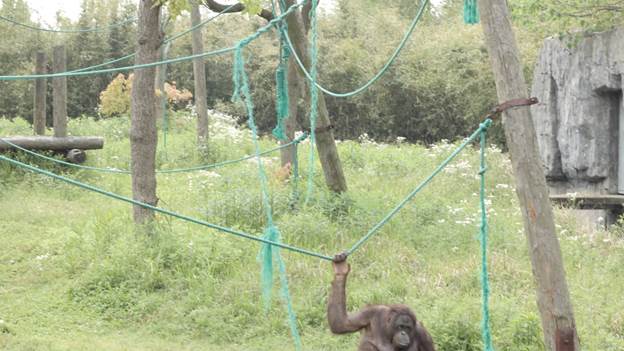
The
orangutans were kept in a large and luxurious exhibit
however; some of the ropes were frayed and loose that can
potentially cause an accident.
Suggestions:
Ropes need to be checked frequently and removed when fayed.
Both ends need to be secured at all times. Also, the use of
marine ropes would be preferable due to their larger size
and durability.

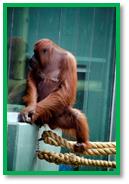
The
following presentations were provided:
CHIMPANZEE:
TO UNDERSTAND, TO MENTOR, TO SAVE. What makes chimpanzees
special, and why, more than any other species, they deserve
our special attention. I will attempt to convey the
intelligence, describe the sensitive minds, and illustrate
the social and physical needs of the chimpanzee. By
revisiting this close relative of humans from a different
angle, I hope that all people will begin to appreciate these
animals and their fundamental needs on a higher level.
CONTRA
FREELOADING.
A presentation teaches people how to feed their animals so,
instead of eating, they would forage similar to their
conspecifics to the wild.
THE
LACK OF SUBSTRATE USE IN ZOOS.
Addresses the easy fix of empty cages and shows how much of
a difference it makes in the animals’ lives when they do
not have to sit in empty concrete cages. This is probably
the most important animal welfare presentation I will give.
LET
THEM BE ELEPHANTS.
Describes how the Phoenix Zoos’ enrichment program helped
us to have happier, mentally healthier Before, all these
animals did was to try to kill each other. It also addresses
some foot work to help keep their feet in better shape and
prevent the suffering that wet concrete can cause (which
includes the possibility of early euthanasia).
order
to improve animal welfare.
I
would like to thank the Shanghai Wild Animal Park director
and staff for inviting me to improve their animals’
welfare. I would also like to thank Dr. Mary Lewis for
funding this trip and establishing such a wonderful working
relationship between the Jane Goodall Institute, the Phoenix
Zoo and the Shanghai Wild Animal Park.
|

















